Vaonis Stellina smart telescope review
The Vaonis Stellina is an automated camera-telescope that does away with an eyepiece and solves the light pollution problem. Here's our review


By trading an eyepiece for a Sony camera sensor, the fully computerised Vaonis Stellina refractor telescope allows amateur astronomers to easily capture incredible images of the night sky – even under light-polluted skies.
-
+
Quick automated point-and-shoot set-up
-
+
Incredible views even in light-polluted cities
-
+
Runs off a portable smartphone battery
-
+
Excellent build quality
-
-
Slewing can be slow
-
-
App occasionally crashes
-
-
Field of view too narrow for the Moon
-
-
No manual slewing
Why you can trust T3

The Vaonis Stellina is a French-made, so-called 'smart telescope' that automatically aligns with the stars, tracks and stacks images and puts them on your smartphone... all without you even leaving the sofa.
While today's best telescopes are very capable machines, it can be difficult and time-consuming figure out how exactly to set up a telescope, align it, and competently use to find objects in the night sky. Not so the Vaonis Stellina, a refractor telescope that runs off the kind of portable battery you might use with a smartphone, aligns automatically with the stars in the night sky, and puts some incredibly distant objects 'live' on your smartphone's screen. You don't even have to go outside. Its ease of use makes it one of the best telescopes for beginners (albeit ones with deep pockets).
Part of a breed of smart telescope, including the likes of the Unistellar eVscope eQuinox, that doesn't even have an eyepiece, this is one seriously different way to get into astronomy. And it's addictive.
The Vaonis Stellina first launched in spring 2018. It's one of three smart telescopes from the brand: there's also the smaller and more affordable Vespera , and the hugely powerful and enormously expensive Hyperia. Read on for our full Vaonis Stellina smart telescope review.
- View the Stellina at Vaonis
- Here's how to choose your first telescope
VAONIS STELLINA SMART TELESCOPE REVIEW: FIRST IMPRESSIONS
The Stellina is beautifully constructed and a cinch to use. Dressed in a very clean, sleek and futuristic-looking two-tone white and black chassis that's IP53-certified (so dust and rain-proof), a U-shaped motorised mount holds in its centre a 3.15-inch/80mm refractor telescope. That's about the same size as the kind of telescope you might buy for your back garden; it's what the Stellina does with those optics that counts.
The Stellina weighs about 11kg so isn't too difficult to handle, though it's pushing it to call it portable ... you'll need a car. You could probably squeeze it into a backpack, but don't count on hiking with it. That said, it would be nice to see a custom-made backpack or case become available for the Stellina.
Once set-up and left to its own devices the French-designed Vaonis Stellina looks like what it is – a futuristic-looking autonomous robot with stars in its eyes.
Get all the latest news, reviews, deals and buying guides on gorgeous tech, home and active products from the T3 experts
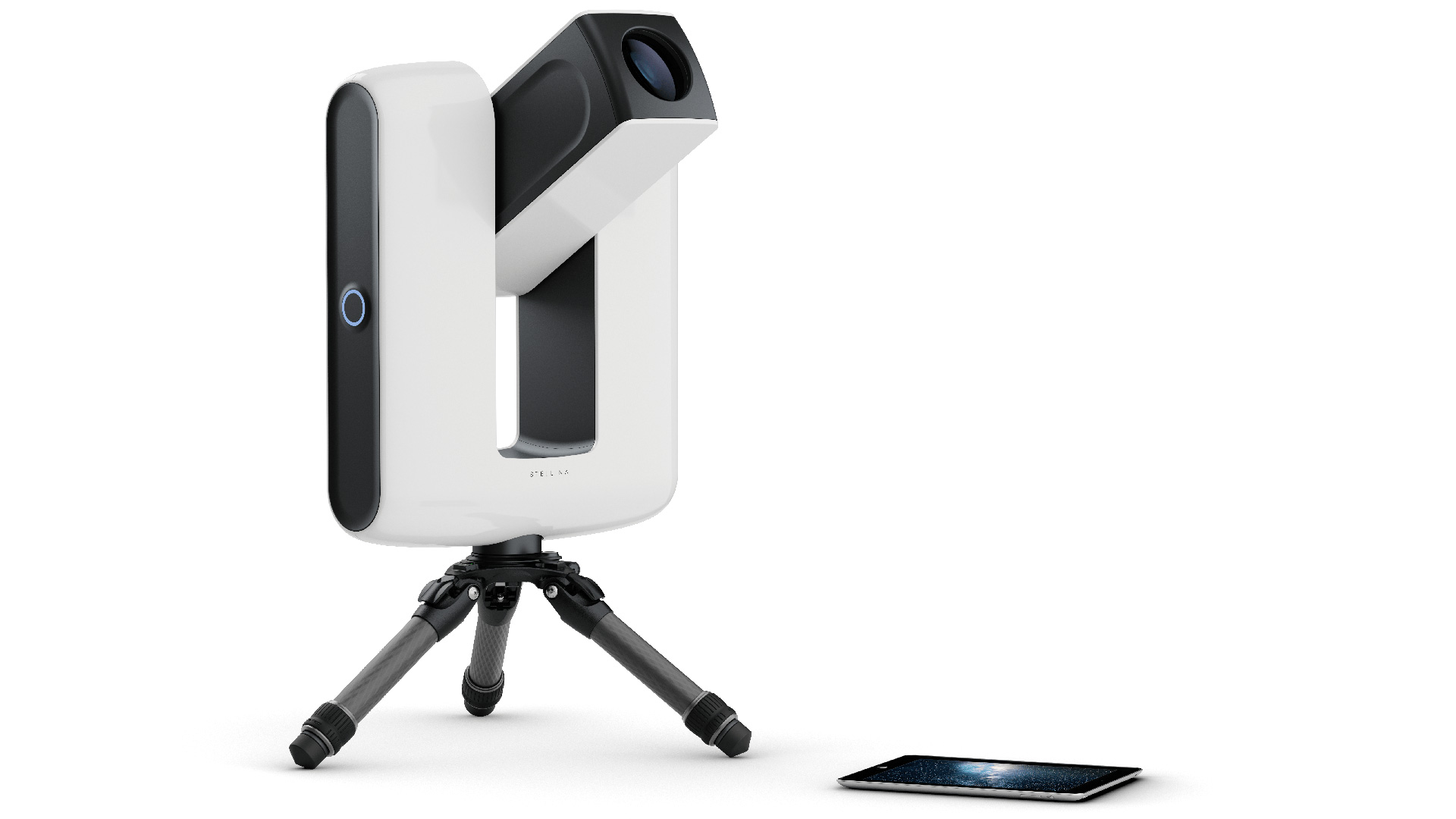
VAONIS STELLINA SMART TELESCOPE REVIEW: PRICE AND RELEASE DATE
On sale on the Vaonis website, the Stellina comes from France and costs €3,999 (GBP £3,420 / USD $4,675). It ships with a Gitzo tripod included, and other accessories are available, including a flight case with wheels.
VAONIS STELLINA REVIEW: DESIGN AND SETUP
Once it's sitting on the included Gitzo tripod, switch-on the Stellina and it spits-out its own WiFi Direct network. Using the free Stellina app on a smartphone it's then necessary to attach it to your home WiFi network. We had a few problems in losing connection now and again, but for the most part it held up well.
VAONIS STELLINA: SPECS
Optical design: ED doublet refractor
Objective lens diameter: 3.15"/80mm
Focal length: 15.75"/400mm
Focal ratio: f5
Software supplied: Stellinapp app
Mount: computerised and motorized alt-az
Weight: 19.8 lbs / 9kg including tripod 11.2 kg/24.7 lbs including Gitzo tripod
Battery life: 10 hours
Connectivity: Wi-Fi (up to 10 smartphones and tablets can connect)
Level: beginner
Keeping a good connection to your Wi-Fi network, and hence your smartphone, is important because it uses your smartphone's GPS geolocate and its own AI software to automatically align with the night sky. This star field recognition software is similar to the planetarium style apps you might find on a smartphone, and it works by helping the telescope figure out exactly what stars it's pointed at. However, it's not a super quick process, taking around 10 minutes to complete. Still, that's far quicker than most back garden telescopes, which typically require being manually aligned to a trio of bright stars such as Vega, Arcturus and Spica. If you don't know anything about the night sky or know how to find any stars whatsoever, the Stellina has your back. However, you do have to watch out for clouds, which halt Stellina in its tracks.
Clear skies allowing, within a few minutes you can be selecting from the app's 100 objects-strong catalogue (comprising most Messier and NGC targets) for the telescope to automatically point at and start imaging. You'll then see those images on your smartphone screen. As a bonus, up to 10 other smartphone or tablet users with the app on their device can hook-up to the Stellina, too.
Remarkably, the Stellina runs off a portable battery of the kind you might use with your smartphone when travelling. It lasts about 10 hours if you use a 20,000 mAh battery, which is more than enough for even the longest observing session. There's a cute compartment on the side of the Stellina to store it in while it's attached via a USB-C cable. However, you can always have another charged-up portable battery standing by just in case it runs out while you're using it outdoors.
VAONIS STELLINA SMART TELESCOPE REVIEW: FEATURES AND USABILITY
The Stellina is controlled completely independently using that smartphone app. Inside it is a vast catalogue of stars, open clusters, nebulae and galaxies, which come with auto-magnification and focus data, too, so you don't have anything complicated to think about. For instance, tell the telescope to point at the great globular cluster in Hercules (M13) or the Ring Nebula (M57) and it will slew to it and lock onto it within a few minutes. As it does, it makes a humming noise, which is the sound of the motor, of course.
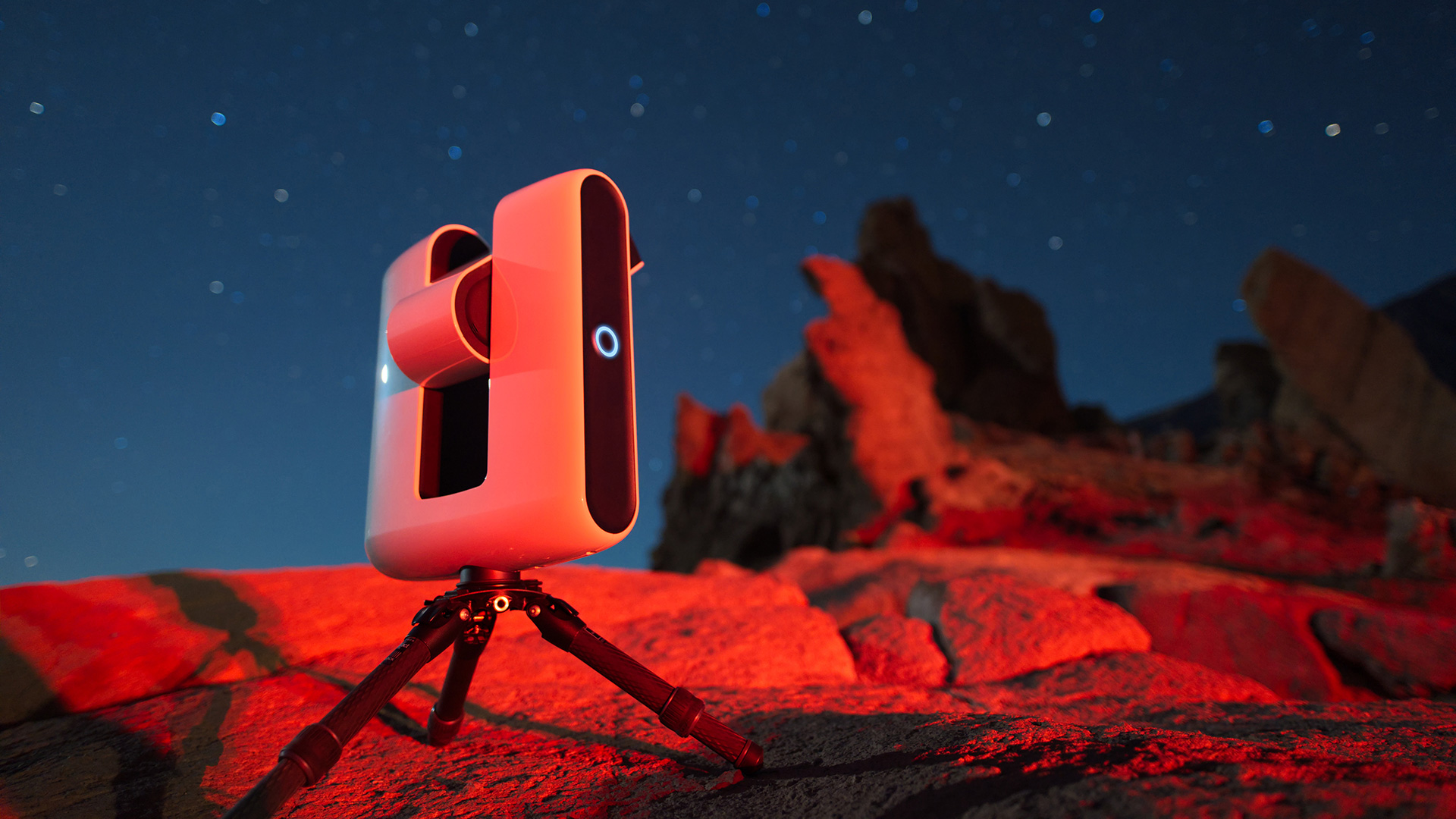
During our test Stellina found everything we asked it to, placing it in the centre of the field of view. Another time-saving device is that it auto-focuses, which saves another step necessary on manual telescopes.
However, as our observing session wore on we did find ourselves getting a little impatient with its slowness.
Heading back inside to let the Stellina do its thing while you check-out images on your smartphone is possible, but only if your WiFi router is going to be close to both the telescope and your phone. In our test we did lose connection a few times, which means rebooting everything. That takes about 10 minutes.
VAONIS STELLINA SMART TELESCOPE: IMAGES
Inside the Stellina is a Sony 1/1.8-inch CMOS sensor – the kind you might find inside a digital camera – that records images of the night sky in 3,096x2,080 pixel resolution. That's 6.4 megapixels, which isn't bad. It also records images in both JPEG and RAW for easier post-processing, if that's your thing.
Via its 400mm F5 apochromatic lens it produces better and better images the longer you leave it pointed at the same object. That's not always true (some globular clusters look instantly fabulous and don't improve), but typically by allowing the Stellina to take hundreds of images to stack together you get a sharper, brighter image.
Seeing a truly deep-sky object many thousands of light-years distant appear 'live' on your smartphone is initially thrilling, but what's really remarkable is how cleverly the Stellina deals with light pollution. We used it in central Cardiff and got some fabulous images of objects we can hardly see, if at all, using a small telescope of the 'non-smart' variety.
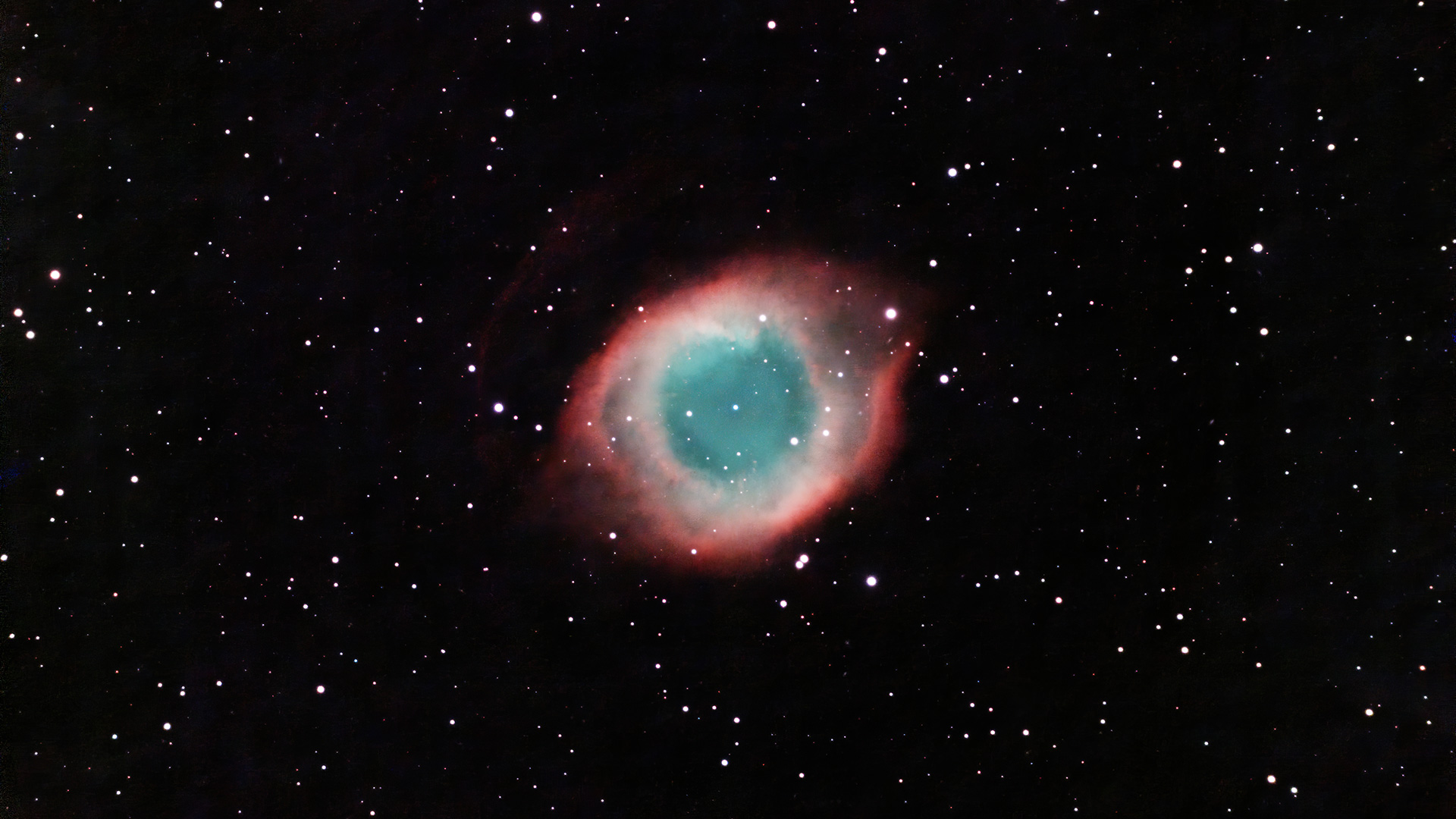
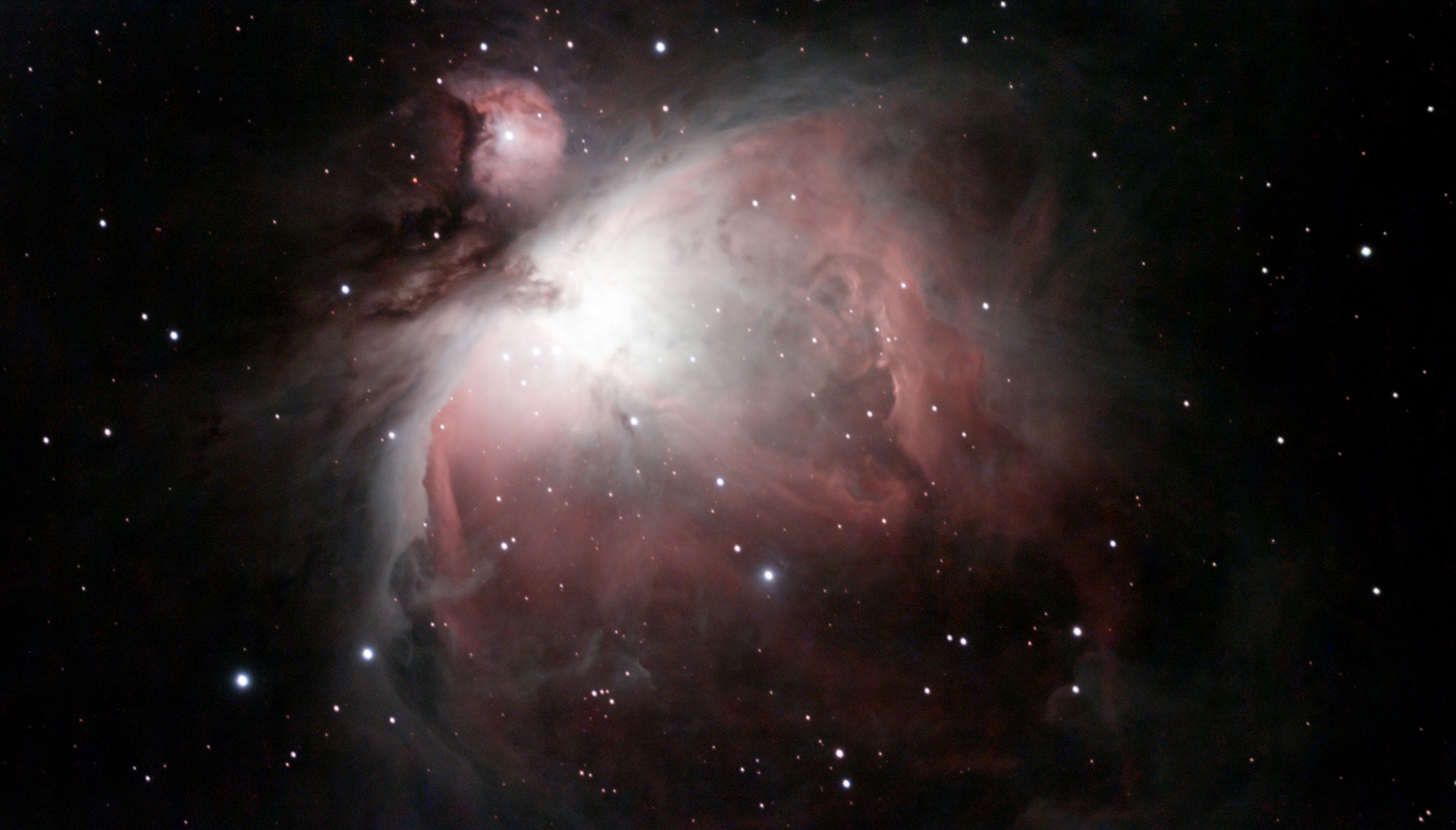
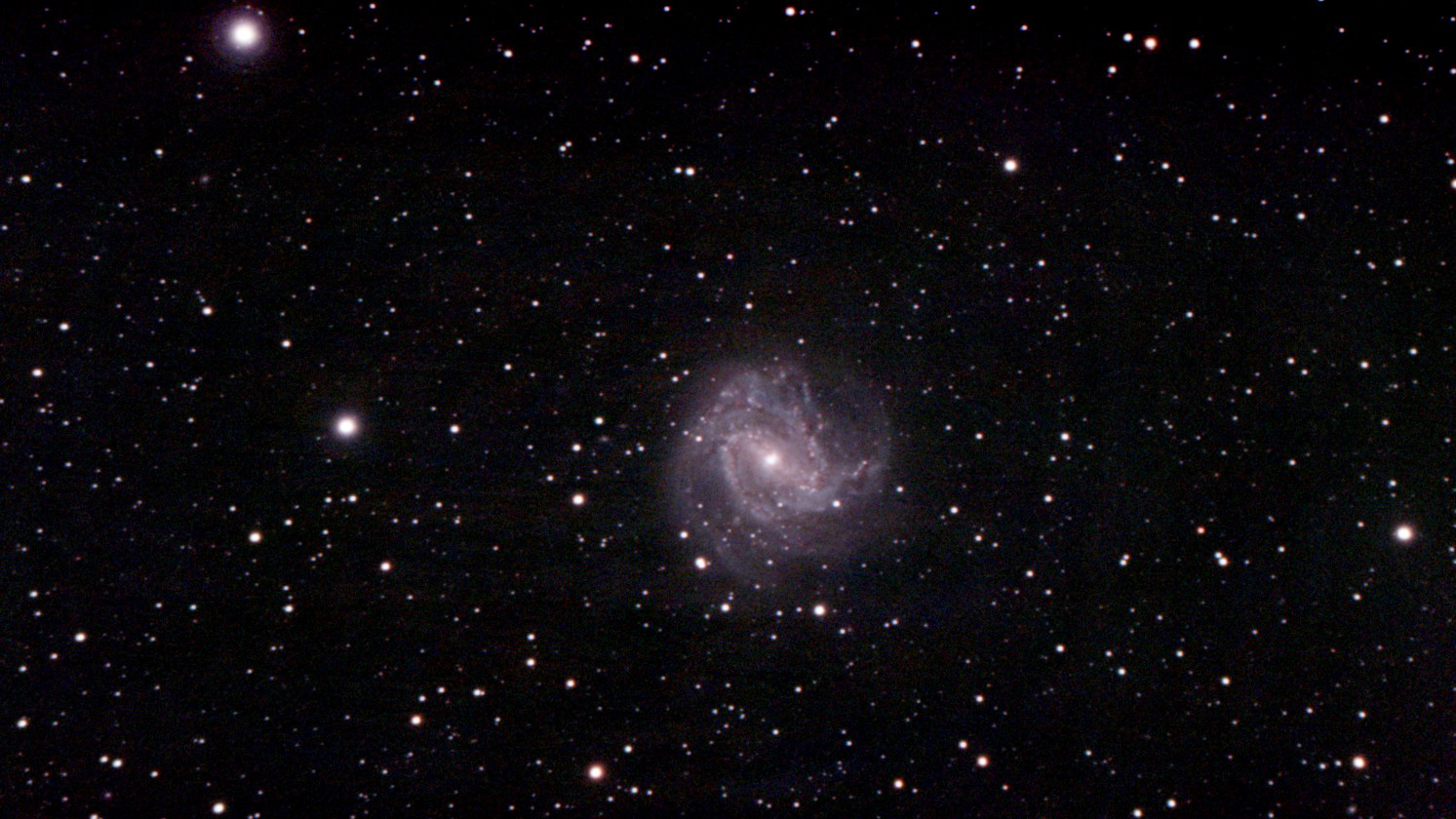
What is slightly overlooked on smart telescopes like this one and also its rival the Unistellar eVscope eQuinox, is that the lack of an eyepiece has consequences for observing. For instance, while looking at a globular cluster such as M13 in the constellation of Hercules, you might use a wide field eyepiece to locate the object and a high-power eyepiece to zoom in on it. The Stellina has a field of view of 1º x 0.7º, which is fine for almost all deep-sky objects, but creates an angular diameter that's slightly too restrictive to capture the whole of the Moon or, sadly, the Andromeda Galaxy (M31).
Happily, a new firmware update changes that. Cue a new panoramic mode called 'automatic mosaic-ing' that stitches images together. The high resolution results can be astonishing.
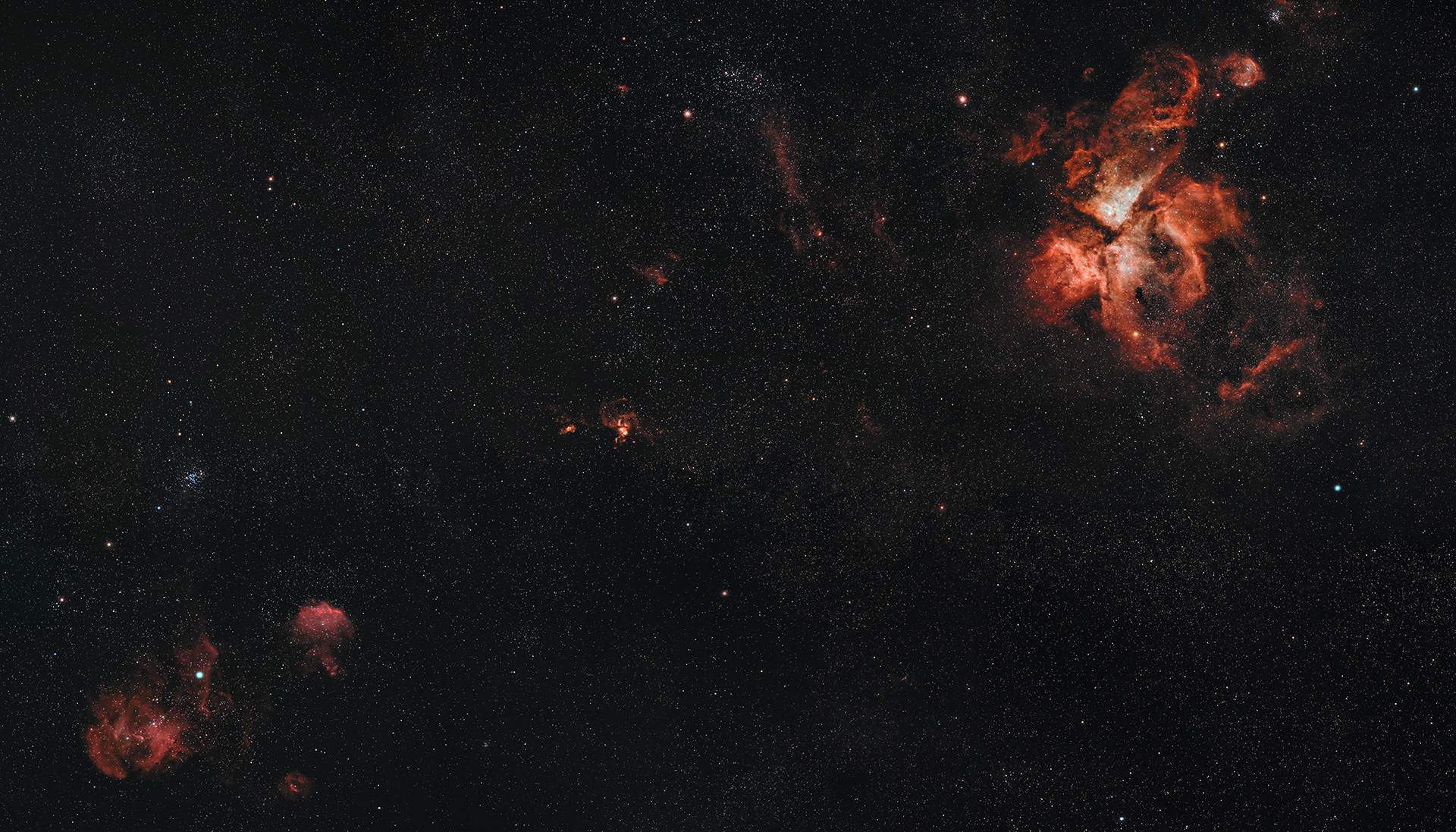
Mosaic of images created using the Vaonis Stellina smart telescope
VAONIS STELLINA SMART TELESCOPE REVIEW: VERDICT
The Stellina is incredibly easy and fun to use, thanks in part to great hardware and a novel way of stargazing, but also because the app is excellent. It gives you targets to aim for that are customised to your location and the time, with its catalogue changing as objects appear and disappear from the night sky. It's beautifully tuned, too, auto-tweaking the magnification and focus for each new object in its crosshairs.
There is a slight downside to depending wholly on a smartphone to get images of the night sky. While traditionally you would stand by a telescope and look through its eyepiece, allowing your own naked eyes to soak in light coming from distant objects, with the Stellina you can sit indoors and scroll through images on your smartphone. It's not really 'stargazing' and we were left wondering if the connection between stargazer and stars is overlooked by what's best described not as a 'smart telescope', but a 'smartphone telescope'.
Still, as a technical achievement the Stellina is impressive, not least because it allows you to see so much more than you could through a normal telescope, even from a light-polluted city. As such it's surely one of the first of a new breed of 'smart telescope' that could quickly dominate.
First reviewed August 2021.
Jamie is a freelance journalist, copywriter and author with 20 years' experience. He's written journalism for over 50 publications and websites and, when he's not writing, spending most of his time travelling – putting the latest travel tech through its paces.
